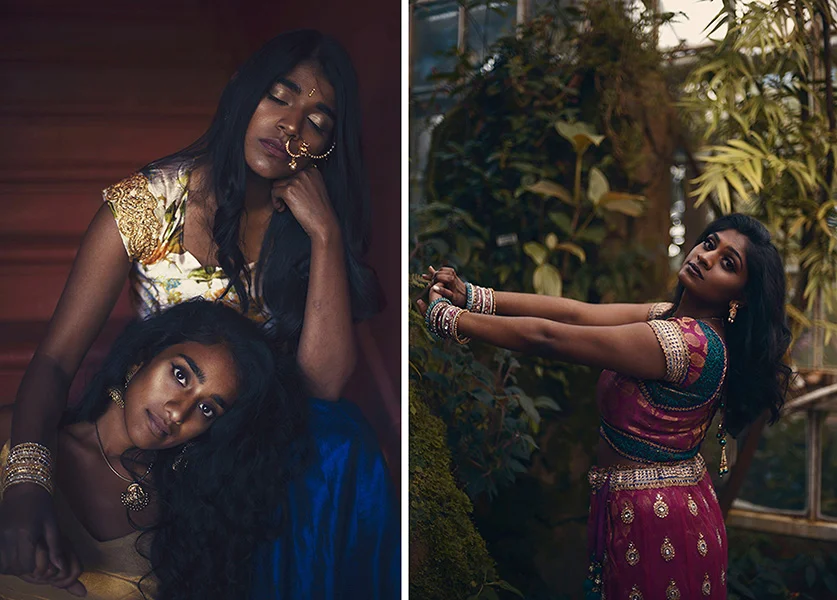Simrah Farrukh is Representing the South Asian Women Who Need To Be Seen.
Words: Stephanie Dando
It’s not a secret that colourism is alive and thriving. One only has to look at reputedly diverse media outlets and platforms to gauge that our modern definition of ‘diversity’ is pretty limited to light-skinned brown people, which is, sadly, not surprising considering that we live in a society which prizes and values whiteness in the highest regard. Thus, there’s a significant gap in representation for darker-skinned folk, and Simrah Farrukh wants to do something about it.
The twenty-year-old American-Pakistani Simrah Farrukh is the photographer behind ‘The Underrepresented’, a project dedicated to “all the South Asian women out there who are…underrepresented...because the colour of their skin doesn’t fit South Asia’s unreasonable, fair and lovely, Eurocentric beauty standards”. There is an immediately perceptible richness to the shoot that is unrelated to the lustre of the traditional Indian gowns worn by the models. Posing against towering naturescapes drenched with honey-toned afternoon light, eyes closed, heads touching together, sometimes embracing, other times reclining, these women might have just stepped out of some deeply earthly flower, Thumbelina style.
Colourism, as Farrukh points out in a blog post, is a particular issue in India and Pakistan, with Bollywood bigwig’s unapologetically endorsing skin lightening creams even in the face of criticism. Even when looking at Asian-centred media that’s made it to the Western mainstream, we see unanimously light-skinned casts (here’s to you, Crazy Rich Asians), so is it any wonder that in 2012 Indians spent more money on skin-whitening products than they did on Coca-Cola?
“ “I want to help girls like me be proud of their culture and where they came from.” ”
Farrukh gifts the viewer a recourse to some sort of Eden. You get a sense from ‘The Underrepresented’ that these women are somewhere else, above it all, the grass and the tall trees and the huge, sweeping leaves, in a soundless sanctuary amongst the organics. Reflective of this, perhaps, is the looks of serenity the dark-skinned models wear on their faces; one could even mistake it as bliss. In Farrukh’s contrived oasis, she gifts dark-skinned Asian women a space in which you couldn’t dream a single skin-lightening product into existence, a space where dark-skinned women are as perfect as the fruit the earth spits up.
Indeed, Farrukh’s mission statement is to “[help] girls like me be proud of their culture and where they came from”. Not only is Farrukh aiming to give a face and voice to dark-skinned South Asian women, she is giving voices and faces; the traditional gowns worn by the girls are respective to the states in India they come from: Gujarat, Karnataka, Andhra Pradesh, and Hyderabad. Farrukh shows that we do not have to eschew real representation while we wait for the rest of the world to catch up and realise that there is diversity even beyond the West’s conception of it.
You can follow Simrah Farrukh on Instagram @simrahfarrukh














